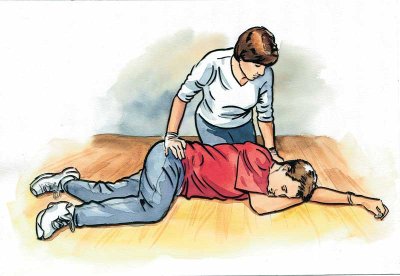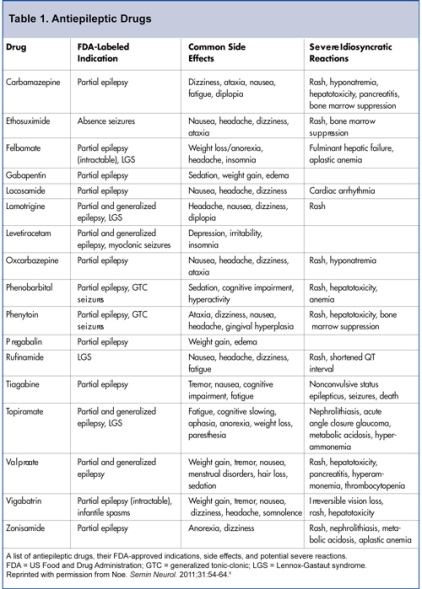 A productive cough, or wet cough, is any cough that produces mucous or phlegm. It is always important for one to check with a trusted doctor or health practitioner if there is concern about a productive cough. However, there are some easy home remedies which can be helpful in treating a productive cough in children or adults. Continue reading
A productive cough, or wet cough, is any cough that produces mucous or phlegm. It is always important for one to check with a trusted doctor or health practitioner if there is concern about a productive cough. However, there are some easy home remedies which can be helpful in treating a productive cough in children or adults. Continue reading
Tag Archives: herbal remedies
Magnesium – Better for Depression than Prescription Drugs

Photo credit: http://www.kinderwensbloggers.com
Do you have enough magnesium in your diet? Magnesium has been shown to help muscle cramps, as well as constipation, kidney stones, osteoporosis, insomnia, fibromyalgia and asthma, and recent studies have shown that magnesium can be very effective as a treatment for depression and possibly PTSD, ADHD and stress or anxiety. What can you do to make sure you have enough magnesium in your daily diet? Continue reading
Fighting the Flu Naturally – 15 Top Tips, Herbs, Vitamins and Antiviral Remedies
 The United States is getting hit quite hard right now with the flu and flu-like viruses. It seems like a hopeless battle. What can you do to protect yourself? Are natural remedies bunk or beneficial? Here are 15 top natural tips, herbs, vitamins, and antiviral remedies you can take, to help build up your immune system and increase your ability to fight off the flu naturally.
The United States is getting hit quite hard right now with the flu and flu-like viruses. It seems like a hopeless battle. What can you do to protect yourself? Are natural remedies bunk or beneficial? Here are 15 top natural tips, herbs, vitamins, and antiviral remedies you can take, to help build up your immune system and increase your ability to fight off the flu naturally.
Continue reading
The BEST Natural Treatments for Depression
 Are you feeling blue? Temporary feelings of depression are normal healthy reactions after a life-changing or traumatic event such as isolation, health challenges, the death of a loved one, the loss of a job, etc. However, if a person suffers from chronic depression, melancholia or dysthymia, this is a major depressive disorder. What is the difference and what steps can you take right now to help with your symptoms of depression? Continue reading
Are you feeling blue? Temporary feelings of depression are normal healthy reactions after a life-changing or traumatic event such as isolation, health challenges, the death of a loved one, the loss of a job, etc. However, if a person suffers from chronic depression, melancholia or dysthymia, this is a major depressive disorder. What is the difference and what steps can you take right now to help with your symptoms of depression? Continue reading
Gallbladder Disease Symptoms and Treatment
 Do you have a stomachache, feel nauseated, and have you experienced intestinal flu symptoms that just won’t disappear? Sharp pain on your right side? Bloating, gas and general fatigue? You might have gallstones or gallbladder inflammation. Check out this article for more information about gallstones, gallbladder disease and what causes it.
Do you have a stomachache, feel nauseated, and have you experienced intestinal flu symptoms that just won’t disappear? Sharp pain on your right side? Bloating, gas and general fatigue? You might have gallstones or gallbladder inflammation. Check out this article for more information about gallstones, gallbladder disease and what causes it.
Herbal Remedies During Pregnancy
Pregnant women have a wide variety of symptoms that are uncomfortable prior to and during childbirth, including nausea, fatigue, vomiting, constipation, etc. Are there natural treatments, life-style changes, exercises, and herbal remedies that can alleviate these symptom? Which treatments are safest for the unborn child? Are there herbs that are unsafe and should be avoided? What does the latest research tell us about herbal remedies and diet during pregnancy? Continue reading
The Uses and Benefits of Cayenne Pepper
 The Greek physician, Hippocrates, famously said, “Let food be thy medicine, and medicine be thy food.” Knowing about foods and their benefits gives us the power to direct our health in a positive direction. This article will examine the benefits and uses of cayenne pepper for enhanced health and healing.Again and again, the therapeutic value of cayenne pepper has been medically validated”. What is cayenne pepper? What are common benefits? How does it affect the heart? Can it help me lose weight? Continue reading
The Greek physician, Hippocrates, famously said, “Let food be thy medicine, and medicine be thy food.” Knowing about foods and their benefits gives us the power to direct our health in a positive direction. This article will examine the benefits and uses of cayenne pepper for enhanced health and healing.Again and again, the therapeutic value of cayenne pepper has been medically validated”. What is cayenne pepper? What are common benefits? How does it affect the heart? Can it help me lose weight? Continue reading
Holistic Veterinary Medicine – What is It? What Can I Expect?
 What is Holistic Veterinary Medicine? Many American families have at least one pet in their household. The most common types of domesticated animals are dogs, cats, fishes, birds, rabbits, and mice. What is holistic veterinary medicine? What do holistic veterinarians treat? How effective is natural treatment? Do some veterinarians use both orthodox and complimentary medicine? Continue reading
What is Holistic Veterinary Medicine? Many American families have at least one pet in their household. The most common types of domesticated animals are dogs, cats, fishes, birds, rabbits, and mice. What is holistic veterinary medicine? What do holistic veterinarians treat? How effective is natural treatment? Do some veterinarians use both orthodox and complimentary medicine? Continue reading
Natural Prevention and Treatment for Healthy Eyes

Image Credit: Biographix Media http://www.biographixmedia.com/
How do we Keep our Eyes Healthy?
Painful, watery, itchy or tired eyes can be the result of many different factors. The type of treatment needed depends on the cause of the eye problem. These factors may include the following:
- Allergies or Environmental Triggers
- Eyestrain or Stress
- Fatigue or Poor Sleeping Patterns
- Conjunctivitis or Infection in the Eye
- Insufficient Oxygen to the Cornea and Outer Eye Tissue
Allergies and Eyes
Most people associate allergies with sneezing, coughing or wheezing, and nasal discharge or “runny nose,” but the eyes are often affected by allergies. According to the American College of Allergy, Asthma and Immunology, eye allergy symptoms can include: Itching, redness, burning and a clear, watery discharge.
Outdoor allergens, such as pollen from grass, flowers, trees and weeds can easily trigger eye allergy symptoms as well as indoor allergens, such as dust mites, pet dander, mildew and mold. Environmental irritants such as diesel exhaust and petroleum fumes, perfumes, and cigarette smoke also can cause the eyes to fatigue, burn and water.
 Eye Strain and Overuse
Eye Strain and Overuse
Recent studies show that more than 9 out of 10 adults (93.3 percent) spend more than two hours each day using a computer or other digital device, with more than 6 in 10 adults (60.8 percent) spending five or more hours every day on digital devices. This is often referred to as “digital eye strain.”
Digital eye strain or computer vision syndrome is the physical discomfort felt after two or more hours in front of a digital screen. This would include desktop and laptop computers, tablets, e-readers and cell phones. The average person who does not sit in from of a digital screen will blink the eye about 18 times per minute. This natural blinking, lubricates the eyeball and prevents dry, itching or burning eyes. However, research shows that those who spend 2 or more hours staring at a digital screen, blink the eyes less often. This can result in dry, itchy or burning eyes.
 Other causes of eye strain include excessive use of the eyes in any ongoing continuous activity that requires intense and unaltered focus in vision — such as extended amounts of driving, writing, or reading. Each of these activities can cause eye fatigue. Those who work long hours using their eyes, such as accountants, researchers, illustrators or artists, editors, writers are at high risk. Those who drive vehicles without frequent visual changes, such as a truck driver who drives long distance on many miles of road with no change in scenery are also susceptible to eye strain. Continuous use of the eyes without blinking or change in focus, causes the eyes to get less exercise and to strain the eyes.
Other causes of eye strain include excessive use of the eyes in any ongoing continuous activity that requires intense and unaltered focus in vision — such as extended amounts of driving, writing, or reading. Each of these activities can cause eye fatigue. Those who work long hours using their eyes, such as accountants, researchers, illustrators or artists, editors, writers are at high risk. Those who drive vehicles without frequent visual changes, such as a truck driver who drives long distance on many miles of road with no change in scenery are also susceptible to eye strain. Continuous use of the eyes without blinking or change in focus, causes the eyes to get less exercise and to strain the eyes.
Sleeping Disorders and Fatigue
When a person does not get enough sleep the eyes are dramatically affected. After a few sleepless nights, the skin around the eyes can turn an unhealthy brown, yellow or sallow color and often become puffy.
 Chronic sleep loss can lead to lackluster skin, fine lines, and dark circles under the eyes. The body releases more of the stress hormone cortisol which breaks down skin collagen. Collagen can help to maintain the elasticity and softness of the skin. Without adequate rest or sleep, the eyes cannot revive. Sleep, rest, or meditation is necessary to rejuvenate the eyes and maintain proper eye health. Those who do not get enough sleep may experience blurred vision, eye pain, dry eyes, watering or burning eyes, and in extreme cases, trouble focusing, clouded vision, double vision, and twitching of the eyelid or eyeball (myokymia). Myokymia can be very distracting and limit productivity. If a person has trouble sleeping, they should try gentle meditation exercises or napping throughout the day.
Chronic sleep loss can lead to lackluster skin, fine lines, and dark circles under the eyes. The body releases more of the stress hormone cortisol which breaks down skin collagen. Collagen can help to maintain the elasticity and softness of the skin. Without adequate rest or sleep, the eyes cannot revive. Sleep, rest, or meditation is necessary to rejuvenate the eyes and maintain proper eye health. Those who do not get enough sleep may experience blurred vision, eye pain, dry eyes, watering or burning eyes, and in extreme cases, trouble focusing, clouded vision, double vision, and twitching of the eyelid or eyeball (myokymia). Myokymia can be very distracting and limit productivity. If a person has trouble sleeping, they should try gentle meditation exercises or napping throughout the day.
Conjunctivitis or Eye Infection
How does one know the difference between simple eye strain, allergies or an eye infection? Symptoms of an eye infection are more severe. Watery, burning, red and tired eyes caused by an allergic reaction, lack or sleep or eye strain, will generally improve or will be slightly relieved when the person rests or removes the known allergen(s) triggering the response.

Image Credit: Journal of the American Medical Association http://www.jamanetwork.com
Allergies can develop into conjunctivitis or eye infection if not properly treated. Untreated eye infection can be very serious and lead to vision impairment. According to the American Optometric Association, the symptoms of conjunctivitis include:
- A gritty feeling in one or both eyes
- Itching or burning sensation in one or both eyes
- Excessive tearing
- Discharge coming from one or both eyes
- Swollen eyelids
- Pink discoloration to the whites of one or both eyes
- Increased sensitivity to light
The American Optometric Association defines conjunctivitis as:
“Conjunctivitis is an inflammation or infection of the conjunctiva, the thin transparent layer of tissue that lines the inner surface of the eyelid and covers the white part of the eye… While conjunctivitis is usually a minor eye infection, sometimes it can develop into a more serious problem.”
The three major types of conjunctivitis are allergic, chemical, or infectious. Infectious conjunctivitis can be either viral or bacterial. A person can get staphylococcal or streptococcal bacteria from their own skin or respiratory system and this bacteria can spread to the eye through touch, from insects, or from other people.
People can also develop bacterial conjunctivitis from poor hygiene habits, such as rubbing or touching the eyes with unclean hands or using old, contaminated eye makeup and facial lotions.  For this reason, makeup application brushes should be cleaned regularly and old makeup should be discarded after about one year, depending on use. Application sponges should be washed after each use and thrown away after about one month. Most cleansers and lotions contain fatty acids and should be discarded after six months. Makeup contamination can occur at any time, because it is always in contact with the eyes, mouth and fingers, which are highly susceptible to germs. If something has changed color or has a strange smell, throw it away immediately.
For this reason, makeup application brushes should be cleaned regularly and old makeup should be discarded after about one year, depending on use. Application sponges should be washed after each use and thrown away after about one month. Most cleansers and lotions contain fatty acids and should be discarded after six months. Makeup contamination can occur at any time, because it is always in contact with the eyes, mouth and fingers, which are highly susceptible to germs. If something has changed color or has a strange smell, throw it away immediately.
Giant papillary conjunctivitis is an inflammation of the conjunctiva, which is the tissue underneath the eyelid. Those who wear soft contact lenses, can contract this infection from the bacteria on the contact lenses. The likelihood of contracting this infection is heightened during the allergy season.
 Contagious viral upper respiratory infections, such as influenza or the common cold, are generally the causes of viral conjunctivitis. This is usually contracted through coughing or sneezing, and spreads from the mucus of the nose or mouth, onto the hands and into the eye.
Contagious viral upper respiratory infections, such as influenza or the common cold, are generally the causes of viral conjunctivitis. This is usually contracted through coughing or sneezing, and spreads from the mucus of the nose or mouth, onto the hands and into the eye.
Lack of Oxygen to the Eye
Lack of oxygen to the brain and the eye, such as what occurs in those with sleep apnea, heart failure, lung disease or other cardio-pulmonary, or neurological conditions, can cause eye strain and result in loss of vision due to the effects on the retina, choroid or optic nerve.  Also at risk are pilots or cross country hikers, who become oxygen deprived. If someone is experiencing blurring vision, pain, or swelling or pressure behind the eyes, due to lack of oxygen, they should contact their doctors or trusted health practitioner. If an insufficient amount of oxygen is entering the bloodstream, the body will react rapidly. This deficit in oxygen is called hypoxia. The eye is usually the first body part to be affected by hypoxia. A person can recover when the body regains its normal oxygen supply. Hypoxia will progress to anoxia if left untreated. Anoxia is a complete lack of oxygen which results in permanent physical damage or death.
Also at risk are pilots or cross country hikers, who become oxygen deprived. If someone is experiencing blurring vision, pain, or swelling or pressure behind the eyes, due to lack of oxygen, they should contact their doctors or trusted health practitioner. If an insufficient amount of oxygen is entering the bloodstream, the body will react rapidly. This deficit in oxygen is called hypoxia. The eye is usually the first body part to be affected by hypoxia. A person can recover when the body regains its normal oxygen supply. Hypoxia will progress to anoxia if left untreated. Anoxia is a complete lack of oxygen which results in permanent physical damage or death.
Contact lenses, in addition to being a trigger for bacterial infections (as written above), can decrease the supply of oxygen to the cornea when it is too tight, too thick or if worn too long. However, a soft contact lens known as silicon hydrogel is less likely to cause this problem, as it provides six times more oxygen to the eye than the traditional soft lens, but these lenses are more expensive. Those who are not practicing careful hygiene with their contact lenses or who wear their lenses too long, could experience symptoms such as clouded vision and red and painful eyes. If this occurs, the person should discontinue using contact lenses and consult a medical practitioner. They might be advised to use and ointments or drops to reduce swelling, tearing, and promote healing.
Preventative Measures
To prevent bacterial or viral eye infection and allergic or chemical eye strain or infection, simple preventative measure can be taken:
 Keep windows closed during high pollen periods; use air conditioning in your home and car.
Keep windows closed during high pollen periods; use air conditioning in your home and car.- Wash your hands thoroughly and frequently and especially after petting any animal.
- Wear glasses or sunglasses when outdoors to keep pollen out of your eyes.
- Take frequent breaks if spending long hours using the eyes (writing, driving, reading, etc.)
- Use “mite-proof” bedding covers to limit exposure to dust mites, and a dehumidifier to control mold.
- Don’t touch your eyes with your hands.
- Drink plenty of water
- Change your towel and washcloth daily, and don’t share them with others.
- Discard eye cosmetics, particularly mascara.

- Get plenty of sleep, or try meditation or frequent naps to rest the eyes.
- Don’t use anyone else’s eye cosmetics or personal eye-care items.
- Follow your eye doctor’s instructions on proper contact lens care.
- Use specially designed computer eyewear such as anti-reflective, or AR, lens, or blue light-blocking lenses
Natural Treatments for Tired Eyes
There are several natural treatments that might be effective for tired eyes. However, if you suspect that you have a serious infection and experience no relief after making lifestyle changes, see a doctor or trusted healthcare professional for an examination, accurate diagnosis, medical advice and treatment.

- Tea has been an age-old remedy to soothe tired eyes. Boil some tea in a little water and let it cool. Dip 2 clean pieces of gauze into the cool tea and place one on each eye for 15 minutes. Make sure you keep dipping the gauze into the liquid as soon as it dries, and reapply as needed.
- For temporary relief of tired eyes, lie down, close your eyes, and place a cold washcloth (compress) over your eyes. Relax for about 15 or 20 minutes. Refresh the compress as needed.
- When seeking relief for computer eye strain, researchers at Japan’s National Institute of Industrial Health have found that lowering the computer monitor’s position (and the angle of your head) increases tear production and soothes tired eyes.
- Eye exercises and vision therapy can sometimes be very effective. Specially trained therapists or ophthalmologists might provide this.
- For tired eyes, wash them with cold water, several times a day. Rinsing the eyes with water has been found to be highly effective in soothing tired eyes.
- Herbal remedies such as eyebright and goldenseal have been known to be helpful (do not use goldenseal during pregnancy, or if you are allergic to ragweed).
- An effective homeopathic remedy might be Ruta graveolens. It is most likely to be helpful in cases of eyestrain where the eyes burn and water after long periods of eye use.
Prescription or Over the Counter Medications
Your health care practitioner or doctor might advise you to control some symptoms with nonprescription medications, sold over the counter or a prescription medication for infection. These might include
- Artificial tears
- Decongestant eyedrops (don’t use eyedrops for “red eye” longer than a week, or they can make things worse)
- Oral antihistamines (note that they may dry your eyes and make your symptoms worse)
- Non-steroidal anti-inflammatory prescription medication
- Antibiotic eye drops or eye cream prescription medication
However, the best way to prevent eye strain or eye infection and to ensure healthy eyes, is to live a healthy, responsible life. Be sure to get plenty of sleep, avoid alcohol, drink plenty of water, protect your eyes from sun, smoke, and eyestrain, and get regular eye checkups from your trusted doctor or health practitioner.
Resources
Azari, AA; Barney, NP (October 23, 2013). “Conjunctivitis: a systematic review of diagnosis and treatment.”. JAMA: the Journal of the American Medical Association 310 (16): 1721–9. doi:10.1001/jama.2013.280318. PubMed
Brendan T. Barrett (2008). “A critical evaluation of the evidence supporting the practice of behavioural vision therapy”. Ophthalmic and Physiological Optics 29(1): 4–25, Retrieved 2015-o1-10 PubMed
Conjunctivitis, American Optometric Association, aoa.org. Accessed 2015-01-10
Cassel, G.H., Billig, M.D., Randall, H.G., The Eye Book: A Complete Guide to Eye Disorders and Health (A Johns Hopkins Press Health Book), Paperback, April 3, 1998, ISBN-13: 978-0801858475
Eye Allergy, American College of Allergy Asthma and Immunology, Accessed 2015-01-10
Goldberg, S., Trattler, W, Ophthalmology Made Ridiculously Simple, Paperback – April 15, 2012
ISBN-13: 978-1935660064
Torin Monahan. “Vision Control and Autonomy Constraints: Managed Care Confronts Alternative Medicine.” June 1998. Retrieved 2015-o1-10 publicsurveillance.com
What Is Allergic Conjunctivitis? What Causes Allergic Conjunctivitis?”. medicalnewstoday.com. Retrieved 2015-01-10.
________________________________________

This article is written by Jean Voice Dart, M.S. Special Education from Illinois State University. Jean is a published author and has written hundreds of health articles as well as hosting a local television program, “Making Miracles Happen.” She is a Registered Music Therapist, Sound Therapist, and Master Level Energetic Teacher, and is the Executive Director, founder and Health and Wellness Educator of the Monterey Bay Holistic Alliance. The Monterey Bay Holistic Alliance is a registered 501 (c) 3 nonprofit health and wellness education organization. For more information about the Monterey Bay Holistic Alliance contact us or visit our website at www.montereybayholistic.com. Images used in this article are free public domain from Pixabay.com or Publicdomainpictures.net Other images are credited.
Disclaimer: The Monterey Bay Holistic Alliance is a charitable, independent registered nonprofit 501(c)3 organization and does not endorse any particular products or practices. We exist as an educational organization dedicated to providing free access to health education resources, products and services. Claims and statements herein are for informational purposes only and have not been evaluated by the Food and Drug Administration. The statements about organizations, practitioners, methods of treatment, and products listed on this website are not meant to diagnose, treat, cure, or prevent any disease. This information is intended for educational purposes only. The MBHA strongly recommends that you seek out your trusted medical doctor or practitioner for diagnosis and treatment of any existing health condition.
Understanding Epilepsy – Are Natural Treatments Effective?
What is epilepsy and how is it treated? Are there alternative or natural approaches to treating epilepsy? When it comes to the subject of epilepsy, many people find it difficult to fully understand the disorder and all of its characteristics. Even though signs of epilepsy in people were present centuries ago, epilepsy is a relatively new discovery in the world of health. Before the advancement of medical technology, those with epilepsy might have been look upon by others with confusion.
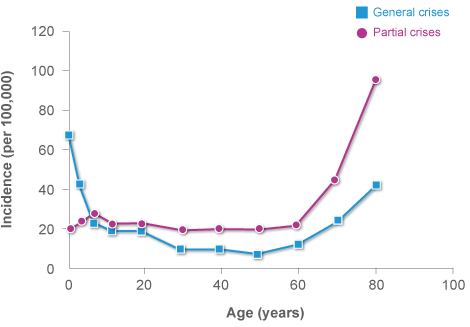
The Center of Disease Control & Prevention states that “2.3 million adults and 467,711 children (0-17 years of age) in the United States have epilepsy”. The incidence of the diagnosis of epilepsy has increased in the last few decades. There is a higher incidence of seizures among infants and elderly citizens over the age of 70.
What is Epilepsy? 
Epilepsy is a term used to express an array of brain disorders caused by seizures. Depending on the type of epilepsy, the disorder may be short-term or long-term. Epilepsy is characterized by a tendency for recurrent seizures. A seizure occurs when nerve cells in the brain signal abnormally causing temporary disruption in brain function. Neurons are overly stimulated which can lead to involuntary muscle spasms or convulsions, changes in behavior and/or changes in awareness or sensation. There are three main types of seizures: generalized seizures, partial or focal seizures and absence or petit mal seizures. Generalized seizures involve all parts of the brain. The Epilepsy Foundation provides the sub-types of generalized seizures in the following:
- Grand Mal Seizures- unconsciousness and convulsions
- Myoclonic Seizures- isolated jerking movements
- Clonic Seizures- repetitive jerking movements
- Tonic Seizures- muscle stiffness
- Atonic Seizures- loss of muscle tone
Symptoms Specific to Types of Seizures

Generalized or tonic clonic seizures affect the entire brain. The person falls to the floor and shakes or twitches uncontrollably, and is unable to speak.
Generalized or Tonic-Clonic Seizures – With a generalized or tonic-clonic seizure, the person experiences muscle stiffness, loss of consciousness and/or flailing arms and legs. They may lose control of bowel or bladder, may have trouble breathing and turn blue or be foaming at the mouth.
The generalized seizure may last seconds or minutes. After the seizure, the person may feel very confused and it may take up to an hour for him/her to fully regain awareness of the situation.
Partial or Focal Seizures – During partial or focal seizures, part of the brain is affected. The part of the brain that is affected will determine which kind of symptoms arise. For example, if the occipital lobe is affected, the person may experience temporary blurry vision or is extremely sensitive to light. Within this category of seizures, there are also simple and complex partial seizures. Refer to diagrams A and B below.
A. Simple Partial Seizures
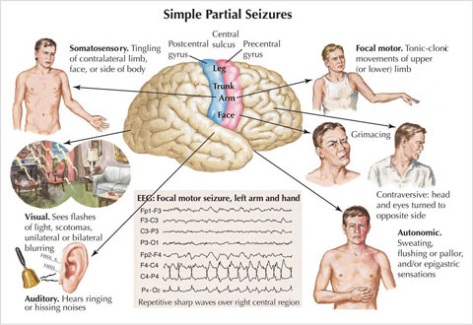
Simple partial seizure symptoms include arm twitching, tingling of face or one side of the body, seeing flashes of light, hearing ringing or hissing, sweating or flushing, facial grimacing or turning of head to one side.
B. Complex Partial Seizures
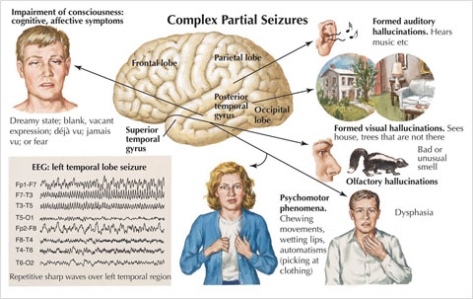
Complex partial seizure symptoms include chewing movements, wetting lips, and picking at clothing, dysphasia or trouble speaking, and auditory, visual or olfactory hallucinations.
 Absence seizures can occur many times in a day. People who have these seizures may exhibit moments of confusion, staring blanking and excessive blinking. Often absence or petit mal seizures go undetected because episodes can be brief but happen multiple times during the day or multiple times every hour. For more detailed information on each of the seizure types and symptoms, the Epilepsy Foundation is a very good resource.
Absence seizures can occur many times in a day. People who have these seizures may exhibit moments of confusion, staring blanking and excessive blinking. Often absence or petit mal seizures go undetected because episodes can be brief but happen multiple times during the day or multiple times every hour. For more detailed information on each of the seizure types and symptoms, the Epilepsy Foundation is a very good resource.
Types of Epilepsy
The type(s) of seizure(s) a person has dictates which type of epilepsy is present. Epilepsy is characterized by the types of seizures a person exhibits. The major types of epilepsy include but are not limited to the following:
- Idiopathic Generalized Epilepsy
- Childhood Absence Epilepsy
- Juvenile Myoclonic Epilepsy
- Photosensitive Epilepsy
- Benign Rolandic Epilepsy
Idiopathic Generalized Epilepsy
Since there are so many different types of epilepsy, we will focus on idiopathic generalized epilepsy (IGE) or primary generalized epilepsy. According to an article written by Selim Benbadis & Leanne Heriaud from Tampa General Hospital, entitled “Idiopathic Generalized Epilepsy,” patients with IGE experience the following type of seizures:
- Patients with IGE have one or more of 3 types of (primary generalized) seizures: myoclonic, absence and generalized tonic-clonic seizures.
- One type may be the only or main type in a given patient.
- Generalized tonic-clonic seizures are convulsions of the whole body lasting 1-2 minutes, and are the most common and most dramatic type of seizures.
- Absence seizures are brief staring spells with arrest of activity, often with eye fluttering, which last just a few seconds.
- Myoclonic seizures are very brief isolated body jerks that tend to occur in the morning.
Cause(s) of Idiopathic Generalized Epilepsy
Idiopathic generalized epilepsy is presumed to have a genetic cause however in many cases of epilepsy, a family history of the disorder may not be present. Patients with IGE who have a family history of the disorder may find it difficult to determine which family member will be born with IGE. The symptoms or seizures associated with IGE often start during childhood or adolescence. 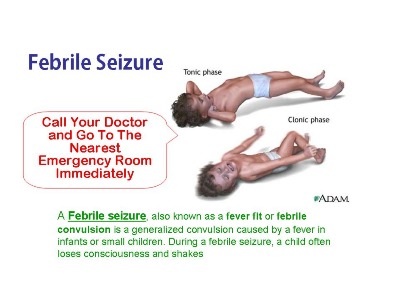 Seizures that occur during childhood and associated with high fevers are termed “febrile seizures,” and are not uncommon. Children and adults can have seizures and not be diagnosed with epilepsy. The diagnosis of epilepsy is not made after only one incidence of seizure, but instead it is made after recurrent episodes of seizures. The Center of Disease Control & Prevention offers some possible theories of events that may lead to epilepsy:
Seizures that occur during childhood and associated with high fevers are termed “febrile seizures,” and are not uncommon. Children and adults can have seizures and not be diagnosed with epilepsy. The diagnosis of epilepsy is not made after only one incidence of seizure, but instead it is made after recurrent episodes of seizures. The Center of Disease Control & Prevention offers some possible theories of events that may lead to epilepsy:
- Oxygen deprivation during childhood
- Brain infections such as meningitis, encephalitis, or brain abscessTraumatic brain injury or head injury
- Stroke resulting from a block or rupture of a vessel in the brain
- Other neurologic brain diseases such as Alzheimer Disease
- Brain Tumors
- Certain Genetic Disorders
Diagnosis of Idiopathic Generalized Epilepsy
For physicians, it’s challenging to exactly pinpoint the type of epilepsy a patient may have. Patients with IGE have normal intelligence and score in the normal range on neurological exams. One method to most accurately diagnose a patient with IGE is to perform electroencephalogram (EGG) tests.
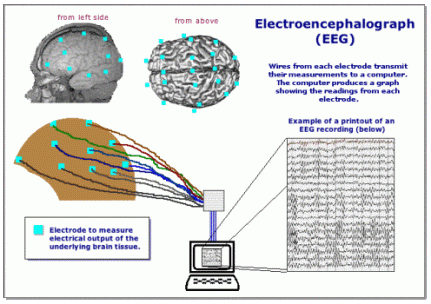 Flat metal discs are attached to the patient’s scalp to tract electrical activity in the brain. When the patient is having a seizure, the device documents the spikes. Other tests to assist physicians in diagnosing epilepsy include: Magnetic Resonance Testing (MRI), Positron Emissions Tomography (PET) Scan and Magnetic Resonance Spectroscopy (MRS). A good resource for more information about diagnostic tests for epilepsy is the John Hopkins Hospital School of Medicine, Neurology and Neurosurgery,“Diagnosing Seizures and Epilepsy.”
Flat metal discs are attached to the patient’s scalp to tract electrical activity in the brain. When the patient is having a seizure, the device documents the spikes. Other tests to assist physicians in diagnosing epilepsy include: Magnetic Resonance Testing (MRI), Positron Emissions Tomography (PET) Scan and Magnetic Resonance Spectroscopy (MRS). A good resource for more information about diagnostic tests for epilepsy is the John Hopkins Hospital School of Medicine, Neurology and Neurosurgery,“Diagnosing Seizures and Epilepsy.”
Orthodox Treatments for Idiopathic Generalized Epilepsy
No cure for Idiopathic Generalized Epilepsy (IGE) currently exists so finding the proper treatment is very important to maintain a healthy lifestyle. People with IGE can live a normal life span.
Prescription Drugs – Most patients diagnosed with idiopathic generalized epilepsy take medication to control their seizures. All prescription drugs have side effects. Some have potentially severe side effects. The medications to help control the incidence of seizures in patients with IGE include but are not limited to the following:
- Valproate
- Lamotrigine
- Topiramate
- Levetiracetam
- Ethosuximide
- Zonisamide
Alternative Treatments for Idiopathic Generalized Epilepsy
Alternative treatments for epilepsy include:
- Ketogenic Diet – A ketogenic diet may be considered to control IGE seizures. The diet is high in fat and low in carbohydrates. Ketones are formed when fat is used for the body’s source of energy. High ketone levels have been indicated to increase seizure control.
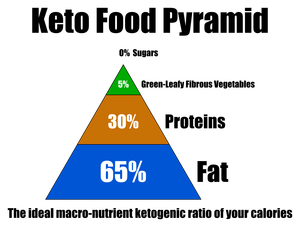 Vining concludes, in a research review entitled “Tonic and atonic seizures: medical therapy and ketogenic diet. ” Epilepsia. 2009, that “Although these seizures are often very difficult to control, some of our medications/therapies have been shown to be effective. Recommendations concerning the efficacy of these therapies and a review of the newer therapies are provided. In addition, the ketogenic diet has been particularly successful in treating these seizures; this is discussed in some detail.”
Vining concludes, in a research review entitled “Tonic and atonic seizures: medical therapy and ketogenic diet. ” Epilepsia. 2009, that “Although these seizures are often very difficult to control, some of our medications/therapies have been shown to be effective. Recommendations concerning the efficacy of these therapies and a review of the newer therapies are provided. In addition, the ketogenic diet has been particularly successful in treating these seizures; this is discussed in some detail.”
Ketogenic diets have been successful with pediatric epilepsy in young children. Almost half of children and young people with epilepsy who have tried some form of this diet reduced seizures by at least 50% and maintained this decrease even after discontinuing the diet. Constipation, was the most common negative effect, affecting about 30% of patients, due to fluid restriction. This led to increased risk of kidney stones.
- Biofeedback– Biofeedback has been found to be an effective treatment for epilepsy. Relaxation techniques are used to control the body’s functions such as heart beat and blood pressure. Biofeedback may help control seizures that are triggered by stressful life events. In 10 research studies by Tan et al., (2009), Meta-analysis of EEG biofeedback in treating epilepsy, studied 87 patients whose seizures were not controlled by drug therapy.
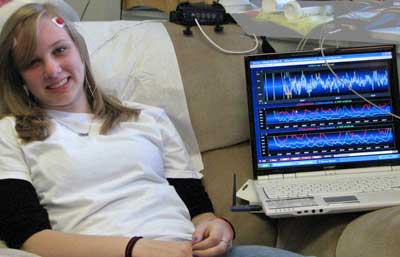 Those with contingent EEG biofeedback all the studies showed fewer weekly seizures and a significant reduction (P < 0.05) in the frequency of seizures. The researchers concluded that neurofeedback training is a possible treatment in patient whose seizures do not respond to medical therapies.
Those with contingent EEG biofeedback all the studies showed fewer weekly seizures and a significant reduction (P < 0.05) in the frequency of seizures. The researchers concluded that neurofeedback training is a possible treatment in patient whose seizures do not respond to medical therapies.
- Herbal remedies – Since ancient times, herbal remedies have been utilized in Traditional Chinese medicine for epilepsy.

In the US, herbal medicines are regulated by the 1994 Dietary Supplement and Health Education Act. Herbal remedies might be helpful in reducing the incidence of seizures, however, a study by Saper et al., 2004, “Heavy metal content of Ayurvedic herbal medicine products.” conducted in Boston with 70 herbal medicines found that 20% of these products contain potentially harmful levels of neurotoxic materials such as lead, mercury or arsenic that may cause seizures. 80% of the preparations did not contain harmful products, however. Some of the herbs that have been known to be effective in treating epileptic seizure side effects (nausea, headache, fatigue, etc.) are listed below:
Ailanthus altissima (Tree of Heaven)
Artemisia vulgaris (mugwort)
Calotropis procera (calotropis)
Cannabis sativa (marijuana)
Centella asiatica (hydrocotyle)
Convallaria majalis (lily of the valley)
Dictamnus albus (burning bush)
Paeonia officinalis (peony)
Scutellaria lateriflora (scullcap)
Senecio vulgaris (groundsel)
Taxus baccata (yew)
Valeriana officinalis (valerian)
Viscum album (mistletoe)
Gingko biloba, ephedra, eucalyptus, pennyroyal, shankhapusphi, star fruit, star anise & sage are some of the herbal medicines containing neurotoxic components which can induce seizures (Samuels et al., 2008), and should not be used by epileptic patients. More research is needed regarding the effectiveness of herbal remedies.
- Essential Oils – Essential oils can be effecting in calming the epileptic patient and preventing the symptoms of epilepsy. Such calming oils include: jasmine, ylang ylang, chamomile, and lavender (not spike lavender which is not recommended). Research was carried out at the University of Birmingham’s seizure clinic which involved using essential oils with individuals who had epilepsy.
 The studies used aromatherapy massage to allow individuals to associate the smell of an essential oil with a state of relaxation. Researchers concluded that the aroma triggers relaxation and can help to reduce seizures. According to the University of Maryland Medical Center, the following essential oils should be avoided: Eucalyptus (Eucalyptus globulus), Fennel (Foeniculum vulgare), Hyssop (Hyssopus officinalis), Pennyroyal (Mentha pulegium), Rosemary (Rosmarinus officinalis), Sage (Salvia officinalis), Tansy (Tanacetum vulgare), Thuja (Thuya occidentalis), and Wormwood (Artemesia absinthium) For more information about aromatherapy contact the Aromatherapy Council
The studies used aromatherapy massage to allow individuals to associate the smell of an essential oil with a state of relaxation. Researchers concluded that the aroma triggers relaxation and can help to reduce seizures. According to the University of Maryland Medical Center, the following essential oils should be avoided: Eucalyptus (Eucalyptus globulus), Fennel (Foeniculum vulgare), Hyssop (Hyssopus officinalis), Pennyroyal (Mentha pulegium), Rosemary (Rosmarinus officinalis), Sage (Salvia officinalis), Tansy (Tanacetum vulgare), Thuja (Thuya occidentalis), and Wormwood (Artemesia absinthium) For more information about aromatherapy contact the Aromatherapy Council
- Acupuncture -The effectiveness of acupuncture in treating epilepsy has not been statistically significant. A review of acupuncture in epilepsy, “Acupuncture for epilepsy” by Cheuk et al., (2009) included eleven randomized controlled trials. The authors suggested that studies using a larger sample size with appropriate standardized control groups are necessary to assess the effectiveness of acupuncture on treating epilepsy. They concluded that more studies are needed.
- Yoga– Yoga has been shown to be an effective treatment for epilepsy patients. In a research study conducted by Sathyaprabha et al., 2008, “Modulation of cardiac autonomic balance with adjuvant yoga therapy in patients with refractory epilepsy,” 18 members performed yoga (breathing exercise, meditation & yoga postures) and 16 members performed non-yoga exercise (quiet sitting & simple physical exercise) for one hour daily for 10 weeks.
 The researchers determined that the yoga group showed significant reduction in seizures (P<0.05) with improved parasympathetic parameters compared to no changes in the non-yoga exercise group. Thus it was concluded that yoga might be used effectively as an alternative therapy in management of autonomic dysfunction in patients with refractory epilepsy.
The researchers determined that the yoga group showed significant reduction in seizures (P<0.05) with improved parasympathetic parameters compared to no changes in the non-yoga exercise group. Thus it was concluded that yoga might be used effectively as an alternative therapy in management of autonomic dysfunction in patients with refractory epilepsy.
- Homeopathic Remedies – A few studies examined the effects of homeopathic remedies but were inconclusive. More research is needed. The following homeopathic remedies may be effective with eliminating associated epileptic symptoms (such as nausea, dizziness, and fever) and have no harmful side effects.
Belladonna — for seizures with a high fever
Causticum — for individuals with seizures triggered by feelings of sadness, grief, hopelessness and fear
Cicuta — for individuals with seizures after a head injury
Cuprum metallicum — for individuals with mental dullness; may be triggered by menstruation or vomiting
- Vitamin Supplements– Eating a well-balanced diet rich in vitamins and minerals may help maintain adequate mental function. People with epilepsy taking seizure medications do appear to have an increased need for calcium and vitamin D to help keep their bones healthy. Large doses of vitamin supplements, unsupervised, do not improve epilepsy and may even be harmful. Some epileptic medications can result in depletion of nutrients and vitamins. Folic acid supplements can be helpful in replenishing vitamin loss caused by medication.
 According to A.R. Gaby (2007), in a review entitled, “Natural Approaches to Epilepsy,” clinical observations and laboratory findings support the benefits of Vitamin E, magnesium, Manganese, thiamine (to improve cognitive function), folic acid, biotin, vitamin D, and L-Carnitine (to prevent valproate toxicitiy with epilepsy patients.
According to A.R. Gaby (2007), in a review entitled, “Natural Approaches to Epilepsy,” clinical observations and laboratory findings support the benefits of Vitamin E, magnesium, Manganese, thiamine (to improve cognitive function), folic acid, biotin, vitamin D, and L-Carnitine (to prevent valproate toxicitiy with epilepsy patients.
Vitamin E was found to be effective in reducing seizures in children according to a 1989 study conducted by Ogunmekan AO, MD. Twenty-four children age 6-17 were randomly assigned to 400 IU/day vitamin E or placebo for three months. of the 12 patients given vitamin E, 10 had a greater than 60% reduction in seizures. None of the placebo group had greater than 60% reduction. 6 out of the 12 children in the vitamin E group had 90-100% reduction in seizures. The study was statistically significant (p<0.05). People who not take take blood thinners should not take Vitamin E.
Other supplements such as Vitamin B6, taurine, vitamin K, melatonin and progesterone, were either uncontrolled trials or case reports, and may be effective with epilepsy symptoms, but more controlled studies and double blind studies are needed. There has been some research on the effects of omega-3 fatty acids on the reduction of epileptic seizures. Fish oil is mainly composed of omega-3 fatty acids (FAs), eicosapentaonoic acid (EPA) and docosahexaenoic acid (DHA). Pischon et al. (2003) concluded that increasing the intake of omega-3 FAs can reduce the plasma inflammatory markers and Schlanger (2002) concluded in a study entitled, “Diet enriched with omega-3 fatty acids alleviates convulsion symptoms in epilepsy patients,” that EPA could reduce seizures by decreasing these markers.
Always consult with your trusted health practitioner when making decisions regarding treatment. Alternative and complementary holistic health practices can be used in conjunction with orthodox or western medicine. Trust your own body wisdom and seek out professional advice.
Resources:
Center of Disease Control & Prevention
Epilepsy Foundation
Johns Hopkins Medicine
Epilepsy Society – Complimentary Therapies
NYU Langone Medical Center Comprehensive Epilepsy Center – Alternative Therapies
Epilepsy Health Center – Alternative Treatments to Epilepsy – WebMD
University of Maryland Medical Center -Seizure Disorders
National Center of Complementary and Alternative Medicine
Research References:
Benbadis S, and Heriaud L, “Idiopathic (Primary) Generalized Epilepsy,” Tampa General Hospital
Cheuk DKL, Wong V. Acupuncture for epilepsy (Review). Cochrane Database Syst Rev 2009; (4):CD005062.
Gaby AR, “Natural Approaches to Epilepsy,” (Review). Alternative Medicine Rev 2007; 12:1
Kossoff EH, Rho JM. Ketogenic diets: evidence for short- and long-term efficacy. Neurotherapeutics. 2009 Apr;6(2):406-14. Review.
Levy RG, Cooper PN, Giri P. Ketogenic diet and other dietary treatments for epilepsy. Cochrane Database Syst Rev. 2012 Mar 14;3:CD001903.
Li Q, Chen X, He L, Zhou D. Traditional Chinese medicine for epilepsy. Cochrane Database Syst Rev. 2009 Jul 8;(3):CD006454. Review.
Ogunmekan AO, Hwang PA. A randomized, double-blind, placebo-controlled, cllinical trial of d-alpha-trocopheryl acetate (vitamin E), as add-on therapy, for epilepsy in children. Epilepsia 1989;30:84-89.
Patel Y, and Welborn M, Alternative Therapies in Treating Epilepsy, ICE Epilepsy Alliance, Intractible Childhood Epilepsy
Pischon T, Hankinson SE, et al.: Habitual dietary intake of n-3 and n-6 fatty acids in relation to inflammatory markers among US men and women. Circulation 2003; 108:155–60.
Samuels N, Finkelstein Y, et al.: Herbal medicine and epilepsy: Proconvulsive effects and interactions with antiepileptic drugs. Epilepsia 2008, 49(3):373–380.
Saper RB, Kales SN, et al.: Heavy metal content of Ayurvedic herbal medicine products. JAMA 2004, 292:2868–2873.
Sathyaprabha TN, Satishchandra P, et al.: Modulation of cardiac autonomic balance with adjuvant yoga therapy in patients with refractory epilepsy. Epilepsy Behav 2008, 12:245-252.
Schlanger S, Shinitzky M, Yam D. Diet enriched with omega-3 fatty acids alleviates convulsion symptoms in epilepsy patients. Epilepsia 2002; 43:103–4.
Tan G, Thornby J, et al.: Meta-analysis of EEG biofeedback in treating epilepsy. Clinical EEG and neuroscience 2009, Vol.40 No. 3.
Vining EP. Tonic and atonic seizures: medical therapy and ketogenic diet. Epilepsia. 2009 Sep;50 Suppl 8:21-4. Review.
______________________________
 This article is written by Hang Pham and Jean Voice Dart. Hang Pham is a Monterey Bay Holistic Alliance Health and Wellness Educator. Hang Pham was born in Hoc Mon, Vietnam. She came to America in 1994, becoming a U.S. citizen in 2011. Hang graduated from Seaside High School with diploma and received her AA in General Studies from Monterey Peninsula College in 2011. She received her BA in Collaborative Health and Human Services from California State University Monterey Bay (CSUMB) in 2012. In addition to working as a volunteer staff with the Monterey Bay Holistic Alliance, she currently works as a Clerical Aid in the Human Resources Department of Salinas City Hall.
This article is written by Hang Pham and Jean Voice Dart. Hang Pham is a Monterey Bay Holistic Alliance Health and Wellness Educator. Hang Pham was born in Hoc Mon, Vietnam. She came to America in 1994, becoming a U.S. citizen in 2011. Hang graduated from Seaside High School with diploma and received her AA in General Studies from Monterey Peninsula College in 2011. She received her BA in Collaborative Health and Human Services from California State University Monterey Bay (CSUMB) in 2012. In addition to working as a volunteer staff with the Monterey Bay Holistic Alliance, she currently works as a Clerical Aid in the Human Resources Department of Salinas City Hall.
 Jean Dart, M.S. Special Education from Illinois State University, is a published author and has written hundreds of health articles as well as hosting a local television program, “Making Miracles Happen.” She is a Registered Music Therapist, Sound Therapist, and Master Level Energetic Teacher, and is the Executive Director, founder and Health and Wellness Educator of the Monterey Bay Holistic Alliance. To find out more about our Health Educators, or to apply as a Monterey Bay Holistic Alliance writer or volunteer, visit our website at www.montereybayholistic.com
Jean Dart, M.S. Special Education from Illinois State University, is a published author and has written hundreds of health articles as well as hosting a local television program, “Making Miracles Happen.” She is a Registered Music Therapist, Sound Therapist, and Master Level Energetic Teacher, and is the Executive Director, founder and Health and Wellness Educator of the Monterey Bay Holistic Alliance. To find out more about our Health Educators, or to apply as a Monterey Bay Holistic Alliance writer or volunteer, visit our website at www.montereybayholistic.com
Disclaimer: The Monterey Bay Holistic Alliance is a charitable, independent registered nonprofit 501(c)3 organization and does not endorse any particular products or practices. We exist as an educational organization dedicated to providing free access to health education resources, products and services. Claims and statements herein are for informational purposes only and have not been evaluated by the Food and Drug Administration. The statements about organizations, practitioners, methods of treatment, and products listed on this website are not meant to diagnose, treat, cure, or prevent any disease. This information is intended for educational purposes only. The MBHA strongly recommends that you seek out your trusted medical doctor or practitioner for diagnosis and treatment of any existing health condition.





